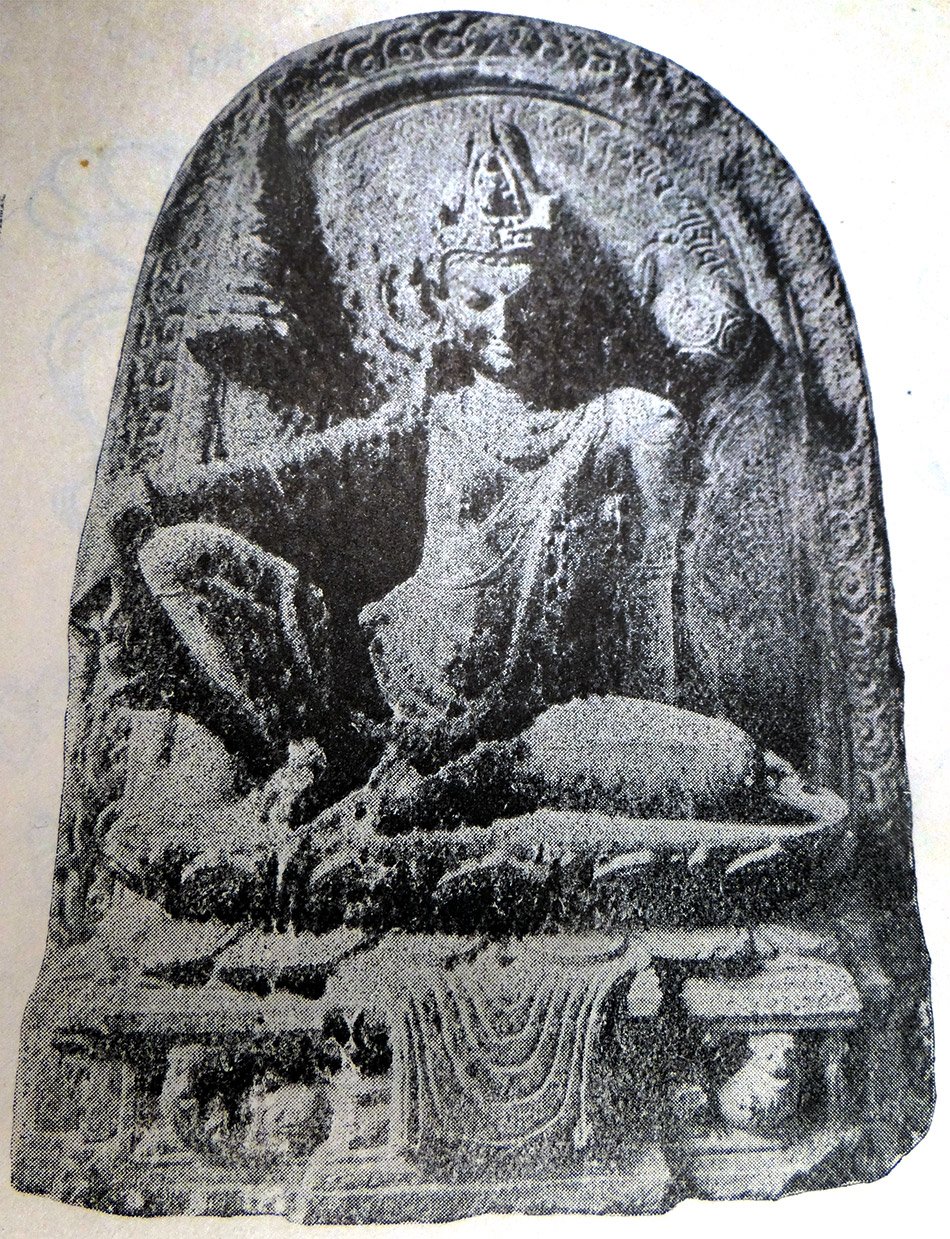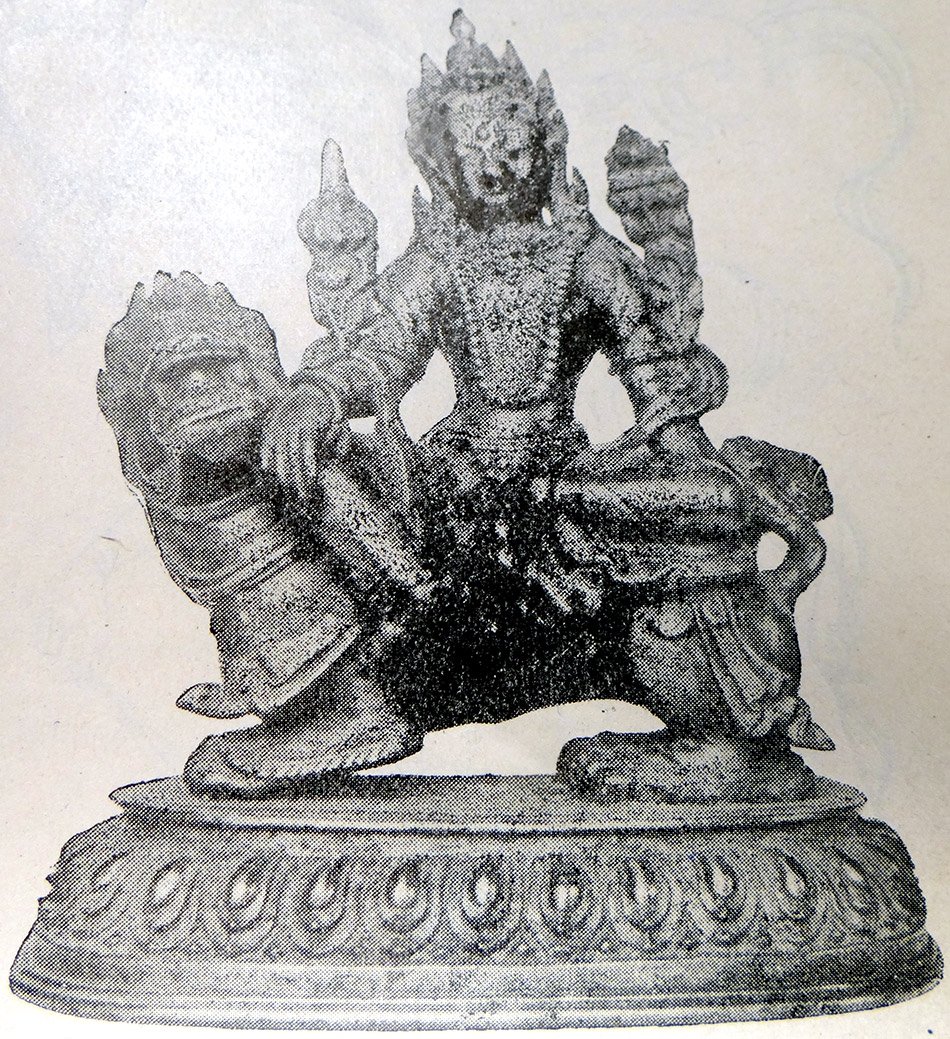The Indian Buddhist Iconography
by Benoytosh Bhattachacharyya | 1958 | 51,392 words | ISBN-10: 8173053138 | ISBN-13: 9788173053139
This page contains an iconography image of Manjushri Vagishvara and represents figure 81-82 of the book Indian Buddhist Iconography, based on extracts of the Sadhanamala English translation. These plates and illustrations represent either photographs of sculptures or line-drawing reproductions of paintings or other representations of Buddhist artwork.
Figure 81-82 - Mañjuśrī Vāgīśvara
 Figure 81: Vāgīśvara (Indian Museum) |
 Figure 82: Vāgīśvara (Nepal) |
Vāgīśvara is the tutelary deity of the Nepalese Buddhists and is widely worshipped in Nepal. The fact that innumerable prayer-wheels in Nepalese temples bear, in monumental Newari characters, the mantra “oṃ vāgīśvara mūḥ” stands witness to his popularity.
One of the Sādhanas describes him as red in colour with all princely ornaments, and as seated on a lion in the Ardhaparyaṅka attitude. He carries the Utpala in his left hand, and the right is disposed in a graceful attitude. He may have a yellow variety, which is known as the Mahārājalīla Mañjuśrī, and the Dhyāna describing that form has already been quoted and translated by Professor Foucher.
The Indian Museum image (Fig. 81) of this divinity [Vāgīśvara] carries a bell in the right hand, and sits on a lion throne instead of a lion. The other image in bronze (Fig. 82) is a recent one, and represents the god [Vāgīśvara] somewhat differently. Vāgīśvara statuettes are found in Tibet.
Colour: red or yellow;
Āsana: ardhaparyaṅka;
Vāhana: lion;
Symbol: utpala;
